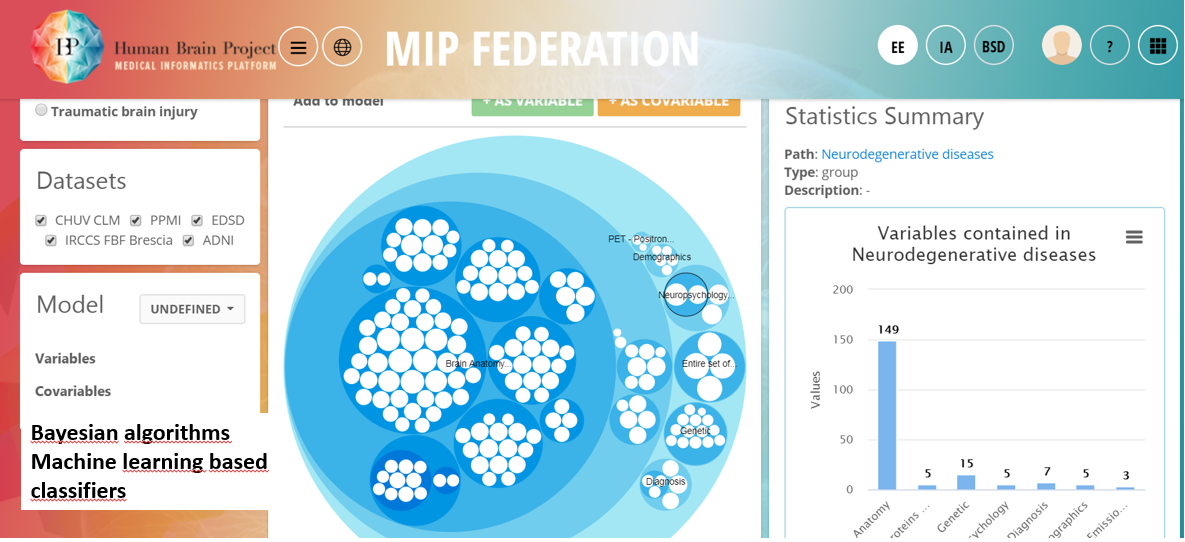Areas of research
- Automated platform for the capture, storage and automated management of data collected during daily clinical activity: CLEMENS system interfaced with the Datawarehouse and the CHUV's computer system and institutional software in relation to the capture of individual medical data.

Extension of this network of collaboration in clinical research with the implementation of the CLEMENS IT structure in the Neuro-Immunology unit of the Department of Clinical Neurosciences (Pr R. du Pasquier), in the regional Memory Centres of the Vaud canton that are coordinated by the CLM, in the Memory Centre of the University Hospitals of Geneva (HUG) (Pr G. Frisoni), and in the homologous Memory Centres in the cantons of Fribourg and Valais, within the framework of the ROMENS University Centre with the support of the Leenaards Foundation.
- International collaborations through different research networks funded by European Research Cooperation Infrastructures :

- IMI EPAD et AMYPAD projects
- Medical Informatics Platform / Human Brain Project / EBRAINS https://www.ebrains.eu/

2. different imaging modalities (MRI, PET, EEG, and different experimental contexts). This research concerns in particular the study of the influence of "non-modular" cognitive functions such as attention, executive functions, working memory and emotions on language.

- Multi-modal tissue-specific MRI imaging
- Molecular Imaging in Positron Emission Tomography
- AMYPAD Study: Amyloid Ligand Imaging Flutemetamol
- SNAP study: Tau Flortaucipir ligand imaging
- New biological markers
- Project ALZEYE (http://www.alzheimer-synapsis.ch), we use both retinal imaging and tear samples to supplement the usual cognitive assessments of patients with suspected Alzheimer's disease. Cerebral microvascular lesions revealed by magnetic resonance imaging will be correlated with retinal microangiopathies. The aim of this project is to define new ways of diagnosing Alzheimer's disease (AD) in humans, in correlation with data acquired with mouse models. With the patients, we use both a new, harmless imaging of the retina (a new type of coherent tomographic optics (CT)) and magnetic resonance imaging (MRI), as well as measurements in tears and blood.

- Clinical studies (phases 2-3) of a diagnostic or therapeutic nature in order to promote innovative techniques, therapeutic interventions or new drugs to prevent pathological cerebral ageing or to slow down the progression of proven pathologies.

1. Psychosocial interventions and/or digital interfaces
INDID (Leidi-Maimone et al, Aging, 2020)
StayFitLonger (Belleville et al., BMC Geriatr 2020)




